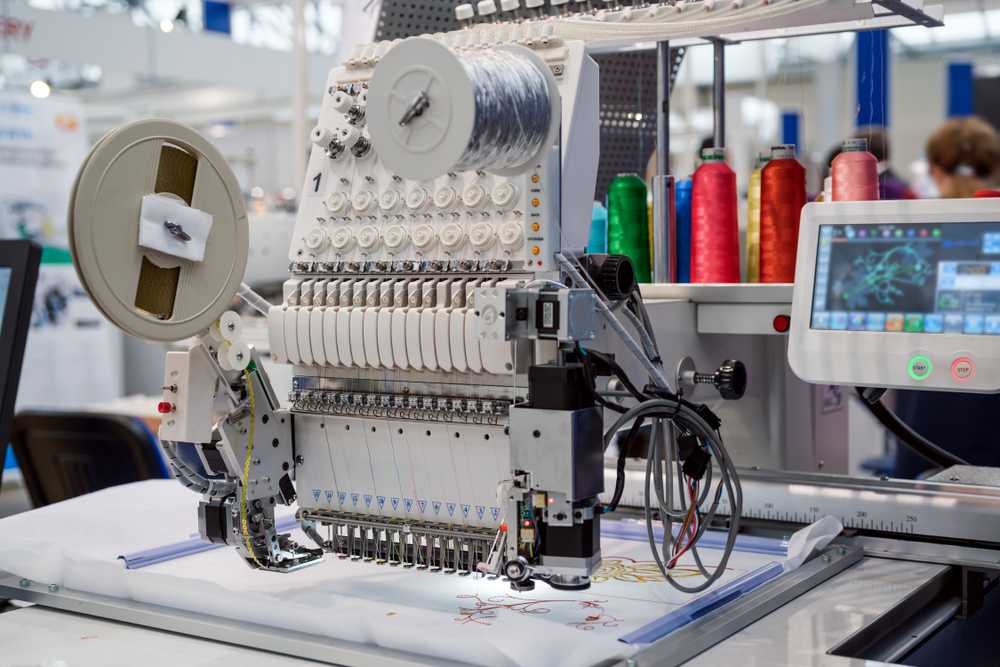Understanding the Embroidery Digitizing Process: Your Ultimate Guide
Needlework digitizing is a thorough craft that needs precision and expertise to convert elaborate designs into electronic formats for machine needlework. As artisans get started on this trip to grasp the embroidery digitizing procedure, a detailed understanding of the essentials sets the structure for excellence.

Understanding Needlework Digitizing Basics
Needlework digitizing fundamentals create the structure whereupon intricate layouts are equated right into machine-readable styles for specific sewing. This first action in the needlework digitizing procedure is critical for making certain that the last embroidered item is a faithful representation of the original layout. Comprehending needlework digitizing basics involves grasping essential principles such as stitch types, sew instructions, thickness, rug, and draw compensation.
Sew types play a vital duty in figuring out the aesthetic and textural outcome of the embroidered design. By picking the suitable stitch type, whether it be satin, fill, or running stitch, digitizers can achieve the wanted result and enhance the overall top quality of the embroidery. Additionally, stitch direction affects the circulation and measurement of the layout, while density establishes the spacing and protection of the stitches.
Moreover, rug sewing gives stability to the design by securing the textile and avoiding distortion throughout the needlework procedure. Draw payment is another important factor to consider to neutralize the all-natural propensity of textile to agreement when sewn. Grasping these embroidery digitizing essentials is fundamental for producing professional-quality stitched items.
Picking the Right Digitizing Software
Picking the suitable digitizing software application is a critical choice that substantially impacts the efficiency and quality of the needlework digitizing procedure. Digitizing for Embroidery. When selecting the appropriate digitizing software program, it is vital to consider variables such as the complexity of layouts you plan to develop, the user-friendliness of the software program, the level of consumer support used, and the compatibility with your embroidery machine
There are different digitizing software application options readily available in the marketplace, ranging from basic programs for beginners to sophisticated software program for professional digitizers. Some prominent selections consist of Wilcom EmbroideryStudio, Hatch Needlework Software Application, and PulseID. These software use a variety of tools and attributes to help you produce elaborate designs easily.
Before making a decision, it is suggested to check out the different software program alternatives through totally free trials or demonstrations to establish which one ideal suits your needs. Furthermore, checking out evaluations and looking for suggestions from skilled digitizers can provide beneficial understandings right into the strengths and weaknesses of each software (Digitizing for Embroidery). By carefully evaluating your find out this here demands and contrasting the attributes of various digitizing software, you can make an informed selection that boosts your embroidery digitizing process
Digitizing Devices and Techniques

Optimizing Style Setup for Needlework
Grasping the details of design settings is fundamental in attaining optimal outcomes in the needlework digitizing learn the facts here now process, building upon the foundation laid by understanding digitizing devices and methods. When maximizing style settings for needlework, it is vital to take into consideration aspects such as stitch kind, density, padding, pull settlement, and enrollment. Enrollment setups line up various aspects of the layout properly, keeping overall design integrity.

Troubleshooting Common Digitizing Issues
When running into typical digitizing problems throughout the embroidery procedure, it is vital to comprehend the origin and implement reliable solutions without delay. One typical trouble is stitch density concerns, where stitches might be as well thick, creating the material to tighten, or as well sparse, bring about voids in the style. Changing the stitch density settings in the digitizing software can assist fix this concern.
Another constant obstacle is string breaks throughout the needlework procedure. This can occur due to various factors such as wrong tension settings, dull needles, or utilizing low-quality string. Ensuring correct maintenance of the embroidery maker, consisting of routine needle adjustments and stress adjustments, can reduce the event of string breaks.
Additionally, style enrollment mistakes can lead to misaligned elements within the embroidery layout. Checking the style placement in the digitizing software program and making essential changes have a peek here prior to stitching can assist in preventing this concern. By attending to these usual digitizing concerns quickly and efficiently, you can ensure a smoother needlework procedure and top quality ended up products.
Final Thought
To conclude, mastering the needlework digitizing procedure calls for a solid understanding of the fundamentals, the best choice of software application, and expertise of devices and strategies. Maximizing style settings and repairing typical digitizing problems are crucial action in making sure premium embroidery outcomes. By complying with these steps diligently, one can attain accuracy and performance in the digitizing process.